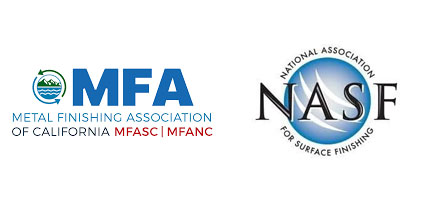Nitric and Citric Acid Processes for Enhanced Corrosion Resistance
Metal Finishing Group provides Stainless Steel Passivation services, utilizing both nitric acid and citric acid methods to enhance the corrosion resistance of your stainless steel components. Passivation is a critical chemical process that removes free iron and other surface contaminants from stainless steel, allowing its inherent chromium content to form a robust, protective passive oxide layer.
Passivation is chosen when stainless steel parts must achieve maximum corrosion resistance, especially in harsh or sterile environments. It is essential for medical devices, aerospace components, and consumer products where reliability and cleanliness are paramount. We offer expertise in various nitric and citric acid processes, ensuring the optimal treatment for your specific stainless steel alloy and application requirements.
Our Stainless Steel Passivation Capabilities: Precision and Versatility
We offer precise Stainless Steel Passivation services, ensuring a clean, high-quality, and highly corrosion-resistant surface for your components.
- Nitric Acid Passivation: Utilizes nitric acid solutions to remove free iron and promote the formation of the passive layer. This traditional method is highly effective for many stainless steel grades.
- Citric Acid Passivation: Employs citric acid solutions, offering an environmentally friendly alternative to nitric acid while still providing excellent passivation results. Citric acid is particularly beneficial for its non-toxic nature and effectiveness on a broad range of stainless steels.
- Contamination Removal: Both processes effectively remove surface contaminants, such as free iron, sulfides, and other foreign materials, that can compromise corrosion resistance.
- Enhanced Corrosion Resistance: Significantly boosts the natural corrosion resistance of stainless steel by maximizing the passive oxide layer.
- No Dimensional Change: Passivation is a chemical surface treatment that does not add or remove measurable material, ensuring part integrity.
- Rack and Barrel Processing: We accommodate both rack and barrel processing methods to suit various part sizes and production volumes.
- Industry Standard Conditions (Types/Classes): We perform passivation to common industry specifications, often referred to as Conditions 1, 2, 3, or other types/classes, which dictate the specific acid concentration, temperature, and immersion times.
- In-house Quality Verification: We conduct water immersion (humidity), high humidity, and copper sulfate tests to verify the effectiveness of the passivation treatment.
Properties of Passivation:
Passivation imparts several key properties that ensure optimal performance and longevity of stainless steel components:
- Maximized Corrosion Resistance: By removing active surface contaminants, it allows the stainless steel to form its most effective passive layer.
- Improved Hygiene: Creates a clean, inert surface less prone to harboring bacteria or other contaminants, crucial for medical and food-grade applications.
- Enhanced Aesthetics: The process can often result in a cleaner, brighter appearance for the stainless steel.
- Reduced Product Contamination: Prevents parts from leaching iron particles that could contaminate sensitive processes or products.
- No Mechanical Stress: As a chemical process, it does not induce mechanical stress or alter the mechanical properties of the part.
Applicable Specifications We Adhere To:
Our Stainless Steel Passivation processes consistently meet or exceed crucial industry standards, ensuring the quality and performance of your components. We regularly process to:
- ASTM A967 (Chemical Passivation Treatments for Stainless Steel Parts) – covering various conditions for nitric and citric.
- AMS 2700 (Passivation of Corrosion Resistant Steels) – covering various types for nitric and citric.
- MIL-S-5002 (superseded, but often referenced for specific types/classes)
- And various customer-specific requirements.
Typical Stainless Steel Passivation Applications:
Passivation is vital for numerous applications across demanding industries:
- Medical Devices: Used for surgical instruments, implants, and pharmaceutical equipment to ensure sterility and corrosion resistance.
- Food and Beverage: Applied to processing equipment, tanks, and utensils for hygiene and corrosion prevention.
- Aerospace: Essential for aircraft components, fasteners, and structural parts exposed to demanding environments.
- Automotive: Protects fuel system components, exhaust parts, and other stainless steel assemblies.
- Semiconductor: Ensures ultra-clean surfaces for process equipment and vacuum chambers.
- Consumer Goods: Enhances the durability and appearance of stainless steel appliances, cookware, and hardware.
- Fluid Handling: Improves corrosion resistance for valves, pumps, and tubing in chemical and water systems.
Why Choose Metal Finishing Group for Stainless Steel Passivation?
Metal Finishing Group is a trusted partner for high-quality Stainless Steel Passivation, offering both nitric and citric acid processes. Our commitment to precise application and rigorous quality control ensures your components achieve maximum corrosion resistance and meet the most stringent industry standards. Partner with us for reliable metal finishing solutions that enhance the longevity and performance of your stainless steel parts.

